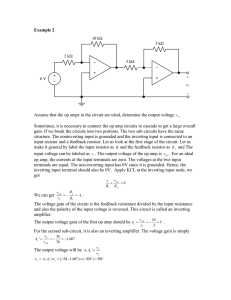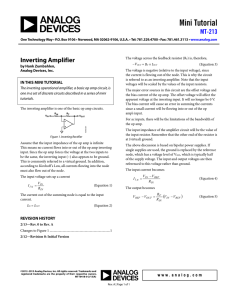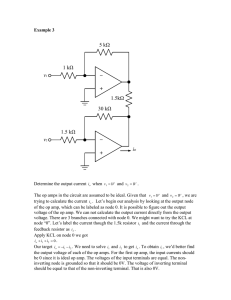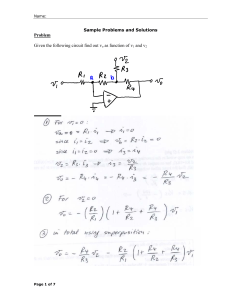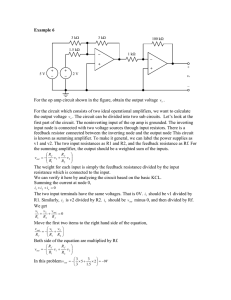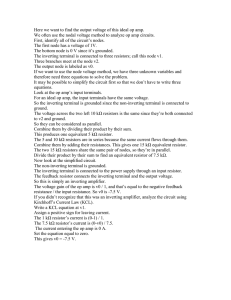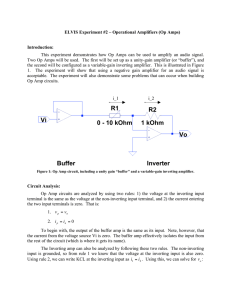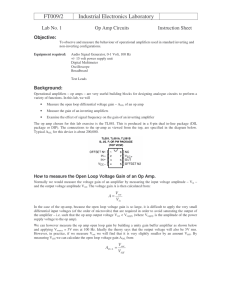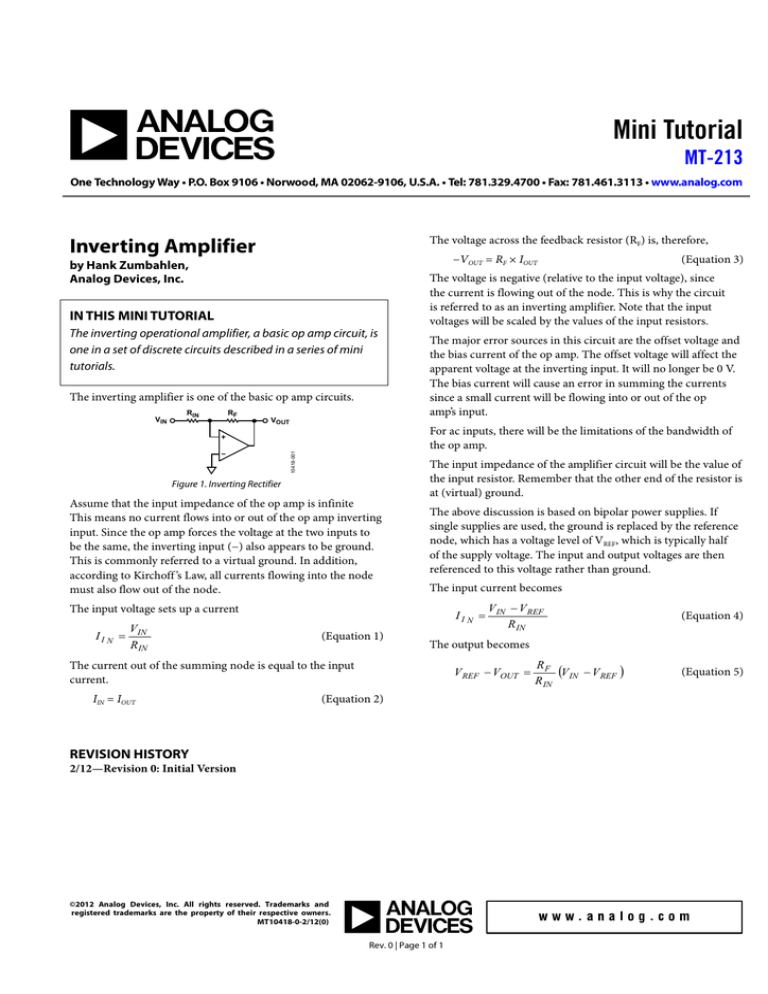
Mini Tutorial
MT-213
One Technology Way • P.O. Box 9106 • Norwood, MA 02062-9106, U.S.A. • Tel: 781.329.4700 • Fax: 781.461.3113 • www.analog.com
The voltage across the feedback resistor (RF) is, therefore,
Inverting Amplifier
−VOUT = RF × IOUT
by Hank Zumbahlen,
Analog Devices, Inc.
IN THIS MINI TUTORIAL
The inverting operational amplifier, a basic op amp circuit, is
one in a set of discrete circuits described in a series of mini
tutorials.
The inverting amplifier is one of the basic op amp circuits.
RIN
RF
VOUT
The voltage is negative (relative to the input voltage), since
the current is flowing out of the node. This is why the circuit
is referred to as an inverting amplifier. Note that the input
voltages will be scaled by the values of the input resistors.
The major error sources in this circuit are the offset voltage and
the bias current of the op amp. The offset voltage will affect the
apparent voltage at the inverting input. It will no longer be 0 V.
The bias current will cause an error in summing the currents
since a small current will be flowing into or out of the op
amp’s input.
For ac inputs, there will be the limitations of the bandwidth of
the op amp.
10418-001
VIN
Figure 1. Inverting Rectifier
Assume that the input impedance of the op amp is infinite
This means no current flows into or out of the op amp inverting
input. Since the op amp forces the voltage at the two inputs to
be the same, the inverting input (−) also appears to be ground.
This is commonly referred to a virtual ground. In addition,
according to Kirchoff ’s Law, all currents flowing into the node
must also flow out of the node.
The input impedance of the amplifier circuit will be the value of
the input resistor. Remember that the other end of the resistor is
at (virtual) ground.
The above discussion is based on bipolar power supplies. If
single supplies are used, the ground is replaced by the reference
node, which has a voltage level of VREF, which is typically half
of the supply voltage. The input and output voltages are then
referenced to this voltage rather than ground.
The input current becomes
The input voltage sets up a current
II N
V
= IN
R IN
II N =
(Equation 1)
V IN − V REF
R IN
(Equation 4)
The output becomes
The current out of the summing node is equal to the input
current.
IIN = IOUT
(Equation 3)
V REF − VOUT =
(Equation 2)
REVISION HISTORY
2/12—Revision 0: Initial Version
©2012 Analog Devices, Inc. All rights reserved. Trademarks and
registered trademarks are the property of their respective owners.
MT10418-0-2/12(0)
Rev. 0 | Page 1 of 1
RF
(V IN − V REF )
R IN
(Equation 5)
Click below to find more
Mipaper at www.lcis.com.tw
Mipaper at www.lcis.com.tw

